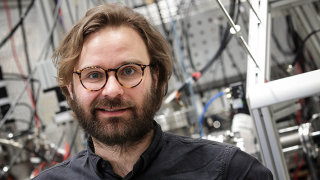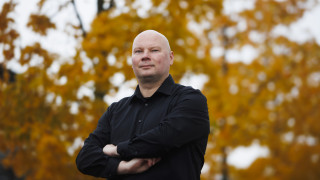Dissertation: Neutrino modeling in extreme conditions (Parkkinen)

Neutrinos are extremely light and electrically neutral particles. They are produced almost everywhere, from distant cosmic events to processes within the human body, and are in fact the most common massive particle in the universe. Neutrinos interact very weakly with matter, only via weak interaction and gravity, which makes them difficult to detect and study.
- For example, most neutrinos arriving from space pass through the Earth without interacting with matter. Hence, after the theoretical prediction of neutrinos, it took almost three decades before their existence was confirmed experimentally, explains doctoral researcher Harri Parkkinen from University of Jyväskylä.
A New approach to model quantum effects accurately
Neutrinos are especially interesting particles, since they can have various quantum effects, such as different coherence phenomena and quantum entanglement. Taking these effects accurately into account in neutrino evolution equations is, however, problematic, and it has been under active study since the early 1990s.
- General quantum transport equations that include quantum effects precisely had not yet been derived. The motivation for my dissertation was to fill this gap and derive such quantum transport equations for neutrinos from robust theoretical grounds, says Parkkinen.
Research focused on astrophysical neutrinos
Parkkinen started his dissertation from fundamental quantum field theory, from which general quantum transport equations for mixing neutrinos were derived in a series of clearly justified steps. The developed mathematical formulation was used to study the importance of quantum effects and to identify those effects that are essential for modeling neutrinos, with a specific focus on astrophysical neutrinos.
- Our research provides theoretical tools for analyzing neutrinos in other environments as well, for example in accelerator and reactor neutrino experiments, rejoices Parkkinen.
M.Sc. Harri Parkkinen will defend his doctoral dissertation “Quantum kinetic theory for coherently mixing neutrinos” on Friday 5.9.2025 at 12:00 in the lecture hall FYS1 on Ylistönrinne. The opponent is Associate Professor Marco Drewes (Université catholique de Louvain) and the custos is Professor Kimmo Kainulainen (University of Jyväskylä). The language of the dissertation is English.
Dissertation “Quantum kinetic theory for coherently mixing neutrinos” is available in the JYX-digital archive: https://jyx.jyu.fi/jyx/Record/jyx_123456789_104540?sid=194629059






